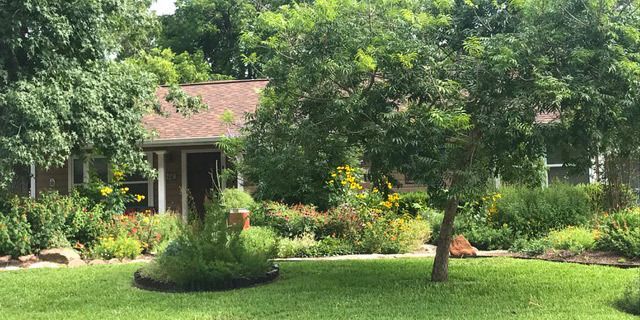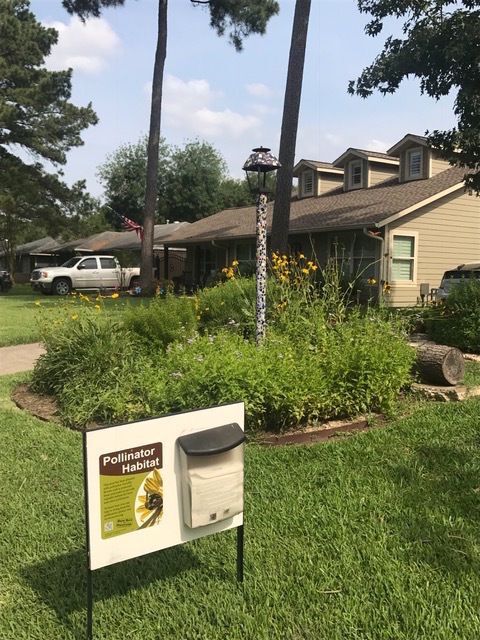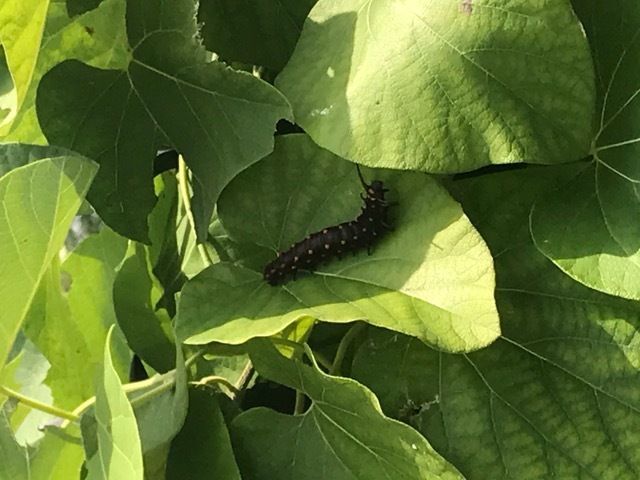A Wildlife Habitat
First Impressions
This front yard is awash in colors and textures, all neatly arranged in curvilinear beds. Insects buzz from plant to plant, happy to feast on the nectar and pollen of diverse blooms.
When a drought took out many of the plants in her garden, Lauren used the opportunity to replace the lost plants with wildlife-supporting species. The garden is an ongoing work in progress, made possible by passion and an undeniable love of observing and learning. About 80% of the plants are Texas natives, with careful consideration given to those native to our eco-region--and a hope one day to have nearly all the garden's plants come from it.
If You Build It
A healthy garden is a living system. Lauren has documented 39 species of butterflies, around 30 species of bees, 20 species of hoverflies, and around 25 species of wasps. This is all in a traditionally-sized front yard! Plants support insects, and insects support birds. This living landscape provides hours of enjoyment, but even more importantly, provides a haven for beneficial insects and wildlife.
But How Does It Look?
Lauren has discovered a few principles that keep her garden looking its best throughout the seasons. Neighbors value the great beauty and connection to nature that she offers her community.
- Have clean edges and borders.
- Use mounds of particular species of plants.
- Communicate and be a good neighbor. Consider a sign in your yard that encourages people to recognize the value of a wildscape.




